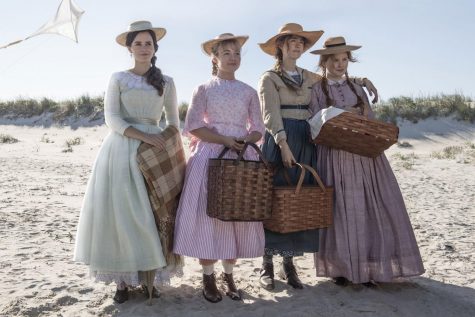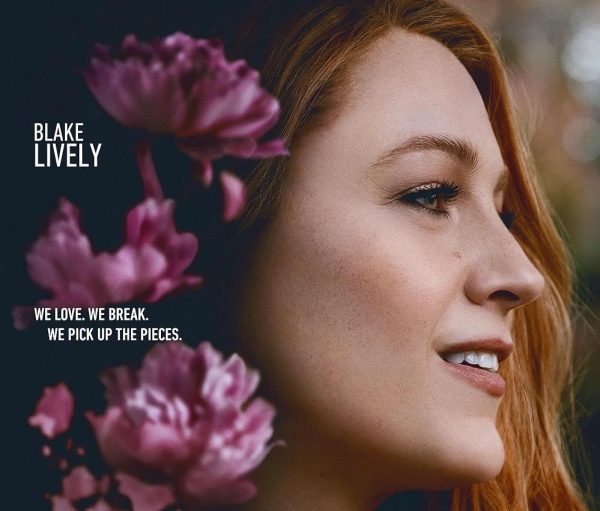Greta Gerwig’s Little Women promotes Women Empowerment
Empowerment usually isn’t the word that comes to mind when the 1800s and women are put together into a sentence, however, in 2019 that changed when Greta Gerwig wrote the screenplay and directed the beloved and timeless story Little Women. Actresses Saoirse Ronan, Emma Watson, and Florence Pugh were the leading ladies of the film and brought new life to the original characters as a new underlying message was worked into the piece.  Throughout the decades, the story Little Women by Louisa May Alcott has been translated to the screen in numerous ways, but this version put an emphasis on women empowerment. The plot follows four sisters and their emergence into womanhood; particularly on Jo who is a writer and wants nothing more than to reside happily with her sisters and her pen. This storyline was revolutionary for its time when women were expected to marry well and raise children. Greta Gerwig tapped into the fears women faced back then by showing the emotions Jo felt as she watched her sisters marry and felt those expectations fall on her. Gerwig also displays this through the character Amy March, who has a monologue in the film where she describes how marriage is an economic proposition because anything a woman has belongs to her husband. The character Marmee played by Laura Dern is the mother figure in the film and shows the inner strength and influence women had at the time by volunteering for the civil war efforts and instilling morals and kindness in her daughters. Through each scene, the relationships made by the characters and lessons learned created a plot enriched with the message that women can do anything they set their minds to. The characters in the film are heard to be complimented on their spirit instead of appearance, and women’s education and the lack of it at the time are discussed as well. Even though the film portrays and highlights the struggles women faced at the time the movie itself shows how far society has come. A woman wrote and directed the film and helped cast it. The costume designer, also a woman, brought vivid color into the film and was praised by her coworkers for her attention to detail and the emotional connection she made between the garments of clothes. For example, how the character Marmee always had four different colors in her dresses or in her hair ribbons to represent her four daughters. The film constantly found ways to admire characteristics in women that may have been found as weakness in the past. This emotional aspect brings a tenderness and an almost nostalgic feeling. In the words of Daria Ausen (11) “It was beautiful. The color scheme was amazing. I felt like I was in a painting.” The new take on the story was welcomed warmly by younger audiences and shows the positive steps the media is taking to push the women empowerment movement forward.
Throughout the decades, the story Little Women by Louisa May Alcott has been translated to the screen in numerous ways, but this version put an emphasis on women empowerment. The plot follows four sisters and their emergence into womanhood; particularly on Jo who is a writer and wants nothing more than to reside happily with her sisters and her pen. This storyline was revolutionary for its time when women were expected to marry well and raise children. Greta Gerwig tapped into the fears women faced back then by showing the emotions Jo felt as she watched her sisters marry and felt those expectations fall on her. Gerwig also displays this through the character Amy March, who has a monologue in the film where she describes how marriage is an economic proposition because anything a woman has belongs to her husband. The character Marmee played by Laura Dern is the mother figure in the film and shows the inner strength and influence women had at the time by volunteering for the civil war efforts and instilling morals and kindness in her daughters. Through each scene, the relationships made by the characters and lessons learned created a plot enriched with the message that women can do anything they set their minds to. The characters in the film are heard to be complimented on their spirit instead of appearance, and women’s education and the lack of it at the time are discussed as well. Even though the film portrays and highlights the struggles women faced at the time the movie itself shows how far society has come. A woman wrote and directed the film and helped cast it. The costume designer, also a woman, brought vivid color into the film and was praised by her coworkers for her attention to detail and the emotional connection she made between the garments of clothes. For example, how the character Marmee always had four different colors in her dresses or in her hair ribbons to represent her four daughters. The film constantly found ways to admire characteristics in women that may have been found as weakness in the past. This emotional aspect brings a tenderness and an almost nostalgic feeling. In the words of Daria Ausen (11) “It was beautiful. The color scheme was amazing. I felt like I was in a painting.” The new take on the story was welcomed warmly by younger audiences and shows the positive steps the media is taking to push the women empowerment movement forward.

Hi, I’m Holland Cogan and a junior at Oakton. This is my first year in Journalism and I’m very excited to be a staff writer! I love Theater, singing,...





